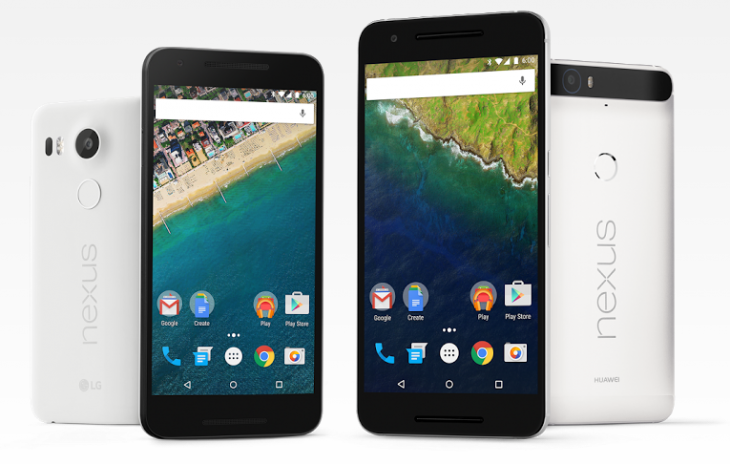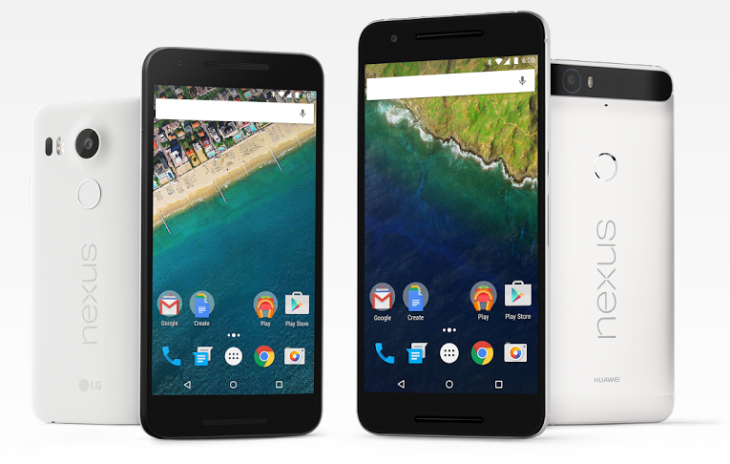
The launch of Nexus devices is a big deal in the Android world and after yesterdays launch there’s still a lot of questions that people have about the devices and the launch, so Hiroshi Lockheimer VP Android, Chromecast and Chrome OS and the Nexus 5X and 6P team, including Dave Burke, Engineering lead, Krishna Kumar, Product Manager for Nexus 5X and Sandeep Waraich, Product Manager for Nexus 6P have taken to reddit to answer some questions.
The questions range in complexity Have a look on reddit to see if there’s any you think are better, but here’s some of the good ones. I started with a question about pricing in Europe, but with some controversy over pricing on the Nexus phones in Australia, I though the question/answer was relevant:
Do you know the reason for the price difference between the US and Europe? I’ve been rocking a Nexus 4 for three years. I was planning to buy the N5X, but at that price point (480€), I can’t afford it. Even with taxes and the weaker Euro, the phone is way more expensive that past nexuses.
HL> We hear you loud and clear. Pricing is an incredibly complicated thing. (Maybe too long to detail here but factors include tariffs, different distribution channels, cost structures, and exchange rates all of which vary country by country.) We want these phones to reach as many people as possible, so we’re bummed that we’ve disappointed you.
Was it a conscious decision to leave out Qi wireless charging, or was it a cost or design necessity?
HL> Thanks for being a Nexus fan! We added Qi wireless charging starting with N4 because plugging in USB micro B was such a hassle! (Which way is up!?) With this year’s Nexii, we support USB Type-C which has a reversible connector so there’s no more guessing. AND it charges incredibly swiftly: 1% to 100% in 97 mins on the 6P for example (the first ~45 mins of charging is especially fast). Meanwhile, wireless charging adds z (thickness). So, ease of plugging in + fast charging + optimizing for thinness made us double down on Type-C instead of wireless!
With the launch of the Pixel C, Google is entering the tablet market with a device that isn’t co-branded. Can we expect the same to happen for phones?
HL> I can’t even figure out what I’m doing this weekend, can’t think that far ahead. 🙂 We’re really excited about the new Pixel and can’t wait to see what developers create for it and the Android ecosystem responds to it. And we’re super excited to have worked with LG and Huawei on the 5X and 6P, and other partners in the past starting with HTC with the N1 — that’s the Nexus way!
What does the “X” and the “P” stand for?
HL> X for the core of the Nexus brand (plus it sounds cool!), P for premium.
Hi. What kind of security goes into keeping our finger prints safe when using imprint? Are the prints encrypted and stored on the device?
DB> Fingerprint features are securely encrypted on the device, and processed in the secure Trustzone protected area of memory. The Android 6.0 fingerprint APIs do not provide any access to the fingerprint material to apps. Fingerprint features never leave the device and are not shared with Google (so for example if you setup a new phone, you need to re-enroll your fingers). If your phone is ever lost or stolen you can easily find, lock, and erase your phone using Android Device Manager.
Why is 16gb still the base model for the Nexus 5x in 2015?
KK: The idea here was to strike a balance between premium features/experiences and affordability.
EDIT: HL> It’s a conspiracy! MOVE TO THE CLOUD!
What made you choose to have a camera bump rather than flatten out the back of the phone and have more battery or Qi?
KK: We wanted the design of the phone to be approachable, easy to hold and easy to use. Overall thickness and feel in hand were important factors in our design decisions. With this year’s Nexii, we support USB Type-C which has a reversible connector and it charges incredibly swiftly: 10 minutes of charging gives you up to 4 hrs of battery life on the Nexus 5X and up to 7 hrs on the Nexus 6P. Therefore, we doubled down on USB C rather than wireless charging. Moreover, with Android M features such as Doze, our screen-off battery life has been vastly improved.
Is the rear camera module found in Nexus 5X and 6P exactly the same? Will users get the exact same image quality when shooting from both phones?
DB> Yea, same sensor (IMX377) and F/2.0 optics. But 6P has more CPU/GPU horsepower so has a few additional features like 240fps slomo (vs 120fps on 5X), Smartburst, and EIS.
Is there digital/software stabilization for video at 1080p on either the Nexus 6P or 5X??
DB> 6P has EIS.
Will these phones support full hardware based encryption? If yes, will these be ported to the Nexus 6?
DB> Encryption is software accelerated. Specifically the ARMv8 as part of 64-bit support has a number of instructions that provides better performance than the AES hardware options on the SoC.
Does the Nexus 5X have USB 3.1?
Nope! Nexus 5X and Nexus 6P supports USB 2.0
How did you feel about the false leaks that portrayed the 6P’s camera bump as much larger than it really is?
SW: The “bump”? We call it a visor internally 🙂 Nice, respectful name, eh. Jokes aside, the blurry-cam leaks (which always are unfortunate) misrepresented the device as most such leaks do. The visor looked distorted, which was sad given how much effort was put into designing it well. The design was driven by major engineering challenges (putting in a great camera with big sensor for amazing low-light performance, LDAF, flash, antennas, nfc coils, wifi 2×2 mimo antennas) and still keeping the form nice looking, and optimizing for thin/light/comfortable feel in hand. You’ll see the high-res images on our sites and the product videos on YT and also great hands-on videos all suggesting the contrary to how things came across when they got leaked. Engadget captured it well – we had a good discussion with them on this topic yesterday.
Can you tell us what led to the decision to include the Android Sensor Hub and detail the benefits it’ll give the phones?
DB> Android Sensor Hub allows us to do sensor processing in a much more power efficient, always on mode. For example, we use it for sensor fusion (Kalman Filtering to combine accel, gyro, mag). Also activity recognition (walking, running, biking, driving). The pickup gesture is also detected by the Android Sensor Hub to trigger Ambient Display. And we’re using it to detect orientation change and trigger rotation of the display. Android Sensor Hub runs on a Cortex M3 which enables us to run at micro-amps current drain.





and heres me thinking the X came from “CTRL + X” for cost CUT.
interesting justification on why no wireless … but still a bit puzzled with it not being USB3.1.
love the fact that the cameras units are the same, that its only in video that some capabilities are chopped.
The most important question regarding the omission of MicroSD card support wasn’t asked… 🙁
Or, in short, we are only now realising how much we screwed up in the design, and in the pricing, and are trying to excuse things with marketing speak. You can’t say you got rid of Qi charging (and 0.5mm of thickness) and then not acknowledge that flattening out the back whilst increasing the battery size and putting in Qi charging would have been a much better, and nearly free, bet. The biggest problem seems to be that these design teams are disconnected from reality and the marketplace to a massive degree. In the real world we want bigger batteries,… Read more »
You must be a conspiracy theorist.